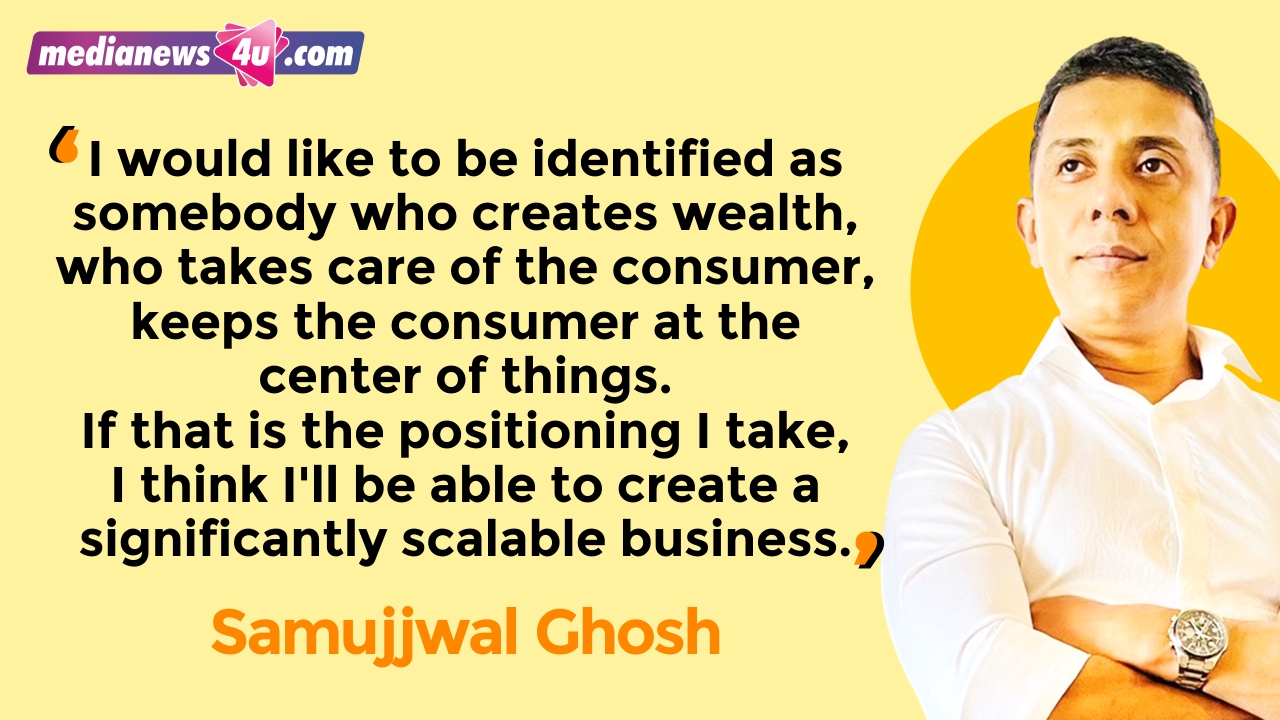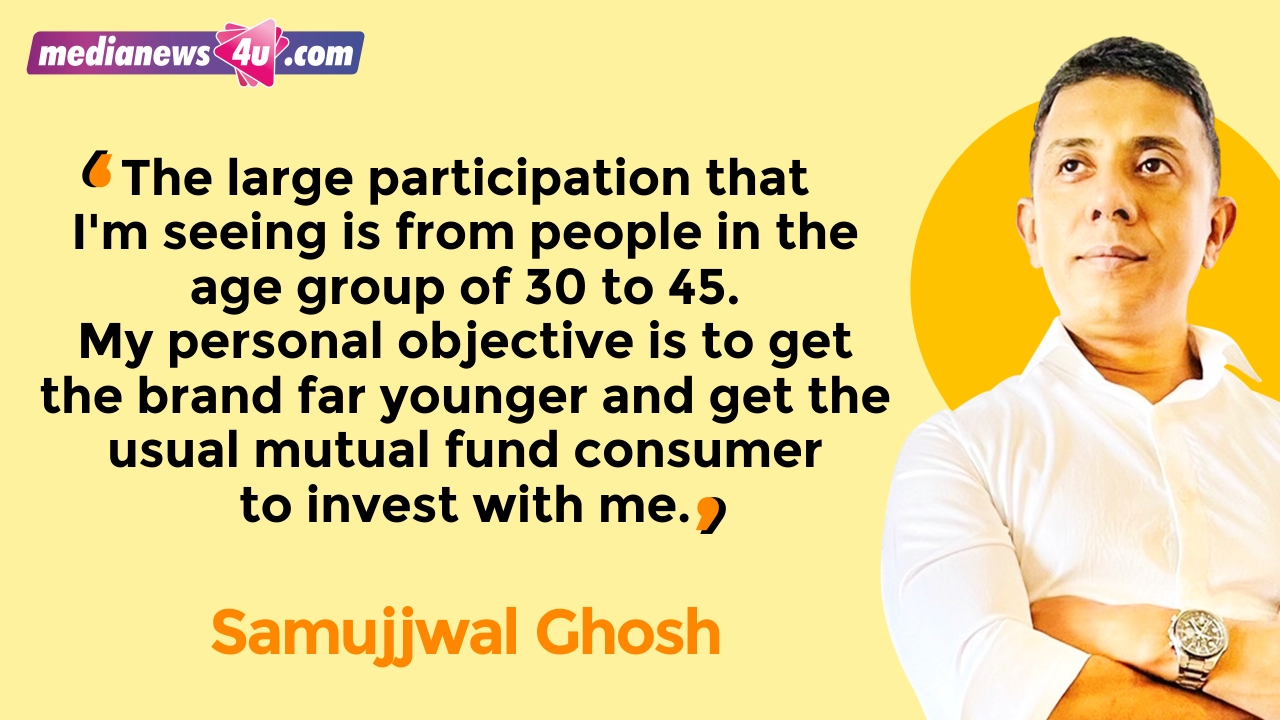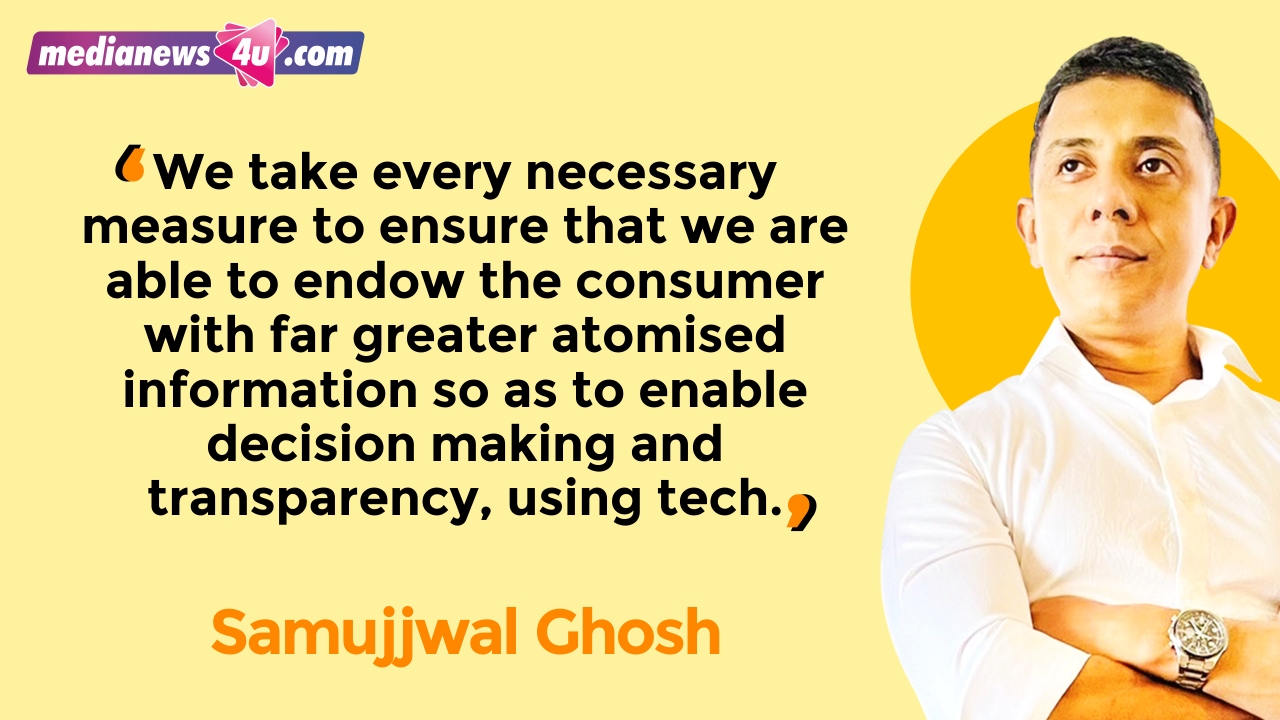The House of Abhinandan Lodha (HOABL) started operations in 2021. What is the concept of ‘New Generation Land?’ What prompted the venture and how has it been received?
HOABL is basically predicated upon a few key strategic consumer insights. The first is that the need to own land in India is rivalled only by the need of ownership of gold by any average Indian. Secondly, the consumption of land is not done at a mass scale in India because both the discovery and ownership of land at a retail level has a lot of barriers. The third part is that consumers usually buy land, like they buy gold – not for trading, but for the flexibility of liquidity during an emergency. We buy gold but we never sell it, but we have the comfort that we have gold in our lockers and we can sell it in the time of need.
And the last point is that land is a significant and possibly the only means to create intergenerational wealth. Having said this, unlike gold as a category, which grew by leaps and bounds, and we have got pretty credible brand names, land unfortunately has never been seen as an agent to create wealth.
So that was primarily the starting point. Whether we are able to – as a brand and one of the more credible names in the real estate space – bring this sensibility of creating intergenerational wealth for the consumer.
Why do we call it ‘new generation’? Because we cater to a new generation with a new sensibility. And, over a period of time, we want the brand to be consumed largely by a younger diaspora who generally don’t look at land as a means of creating wealth.
Land as a wealth creator – can you elaborate on this positioning?
Look at any major metro, be it Mumbai, Bengaluru, Delhi. As far as their infra is concerned, either you grow horizontally or you grow vertically. I’ll give you evidence of, say, Mumbai and Navi Mumbai, or Delhi and Gurugram. We have seen the land appreciation right in front of our eyes, which has happened purely by the expansion of the city. Prices of land have seriously gone up across markets over the last decade or so.
Previously, if you had to buy stocks, it was not possible to buy an ITC share or a TCS share or a TATA or an HDFC share because they are out of reach and you cannot hold. Today with SIP coming in, you are a share owner of HDFC because suddenly it has been democratised – the category has got democratised for consumers on the street to own it.
Land prices have radically gone northward. A common consumer cannot participate at a retail level in land buying. That is what we are making possible.
HOABL launched with two projects. In FY22-’23, four more projects were launched. What is the current number of projects the entity has and where?
We are very heavily invested in Neral, the Konkan belt including Goa, Alibaug. We are very actively looking at new markets. Some of the new markets that are in the pipeline include places like Ayodhya, which is going to be a significant bet.
We look at three types of land categories. One is what we typically call in-city land or ‘Inland’. Then there is something called ‘Tomorrowland’. So typically a Neral which is around two and a half to three hours from the city would be a ‘Tomorrowland’ and then there is ‘Futureland’.
Our intent is to identify ‘hot pockets’ across India concentrated primarily in the North, the South and the West – places and locations where one anticipates significant growth in infrastructure, thereby tourism, and so on. Places where entry at this point will create large gains as far as the retail consumer is concerned.
One very exciting market is Ayodhya, then there is Lonavala. But in addition to that, there are at least 50-odd centers that one is looking at. These are not necessarily cities, but will fall into any of the three categories (mentioned above).
So would appreciation be the rationale for choosing these locations?
The inherent promise that you’re making to the consumer is that you invest with me, you stay invested with me, and I will create wealth for you over a longer time horizon. That is the essential premise of any wealth product. The choice of locations is also triggered and motivated by that. Based on extensive research and understanding, we identify pockets that are going to be nerve centres of growth.
Of the 50-odd nerve centres across the country, we are looking at the first 15 in the financial year 2022-’23 and 2023-’24. And in those, there is an Ayodhya because of how UP as a state is shaping up.
The ultimate gainer in all of this has to be the consumer. If you are not popular with the consumer, and if you’re not able to create a meaningful growth or a gain for him, you will be out of business.
As the underlying asset is land, it is not unlike opening up a retail store. So expansion cannot be mindless. For FY 22-’23, unless and until something really, really credible comes up our way, we are largely codified as far as our land acquisition strategy is concerned – which is based on consolidation and expansion in markets that we have already identified.
One of our primary objectives as a business and my personal objective as a CEO is not to grow mindlessly but to grow profitably. We have seen that mindless expansion and growth doesn’t necessarily mean creating benefits for the consumer as well. At the end of the day, both the consumer and the business have to win.
After a period of say five years, you (HOABL) want to be a platform of land across the length and breadth of the country, where the consumer can come and own land. And this at a retail level, which was earlier not possible. This is where tech comes in.
My personal belief is that in the future, across the globe, there will be only two types of business. One is technology businesses and the other being technology enabled businesses. If you really think about any of these successful and credible businesses across the globe, you will find a very strong tech flavour and we are no different. We are going to make the product, the brand and tech as the fundamental pillars. I don’t think the day is far when we will call our company HOABL Tech rather than just HOABL.
Every project seems to have a unique positioning and branding, like your latest project launch ‘TomorrowView’ in Anjarle? How important is differentiation and branding in real estate today?
Very important. About 10 or 15 years back, branding was relatively muted as far as real estate is concerned. This category is based on creating affinity for brands which leads to a significant, sustainable, competitive advantage. My personal experience is that in this category, a strong and recognisable brand is a key attribute because it contributes significantly to customer confidence and helps influence buying decisions.
At the core of our premise, we are a transformational brand and not a transactional brand. Because I believe that I’m going to create a transformation in the lives of the consumers. And I will create that culture internally in the company where everybody thinks about the consumer first in every decision they take. We are a very young brand at this point. Over a period of time, when I communicate it, the consumer will identify me with something which is unique and distinctive. I would like to be identified as somebody who creates wealth, who takes care of the consumer, keeps the consumer at the center of things. If that is the positioning I take, I think I’ll be able to create a significantly scalable business.

Your first project saw 2.5 times oversubscription at the time of launch. How is the subscription for TomorrowView? How much of the land has the brand sold up until now?
It’s a very large development of around 100-plus acres. And in that we have three phases, of which two phases are completely sold out. We just brought the third into the market a couple of weeks back. Because we were able to create, I believe, a very credible marketing and consumer story, and could show through our previous developments the kind of appreciation, we saw significant gains. This last parcel will go on to reinstate that belief.
We have just got started, the early signs are extremely exciting. We have had more than 1,500 customers who have sampled the product. And I believe that by the time we end the period of the offer, we will probably beat the record we have already set.
Early days to give you a drift on the number. But the initial indicators are extremely encouraging, especially for a couple of reasons.
The large participation that I’m seeing is from people in the age group of 30 to 45. My personal objective is to get the brand far younger and get the usual mutual fund consumer to invest with me.

The second part is I’m seeing participation across markets. Be it Delhi, UAE, Mumbai, Pune, Gujarat, Singapore; it’s not just about the volume of people who are raising their hand and saying that I am keen to participate in your brand, but it is also about the heterogeneity of consumers. So in terms of age groups, backgrounds, professional backgrounds, locations, one is able to see with time that the brand is gaining prominence.
At House of Abhinandan Lodha, you are also building an app to facilitate easier land buying for customers. Can you tell us more about this app?
Inherently, it mimics any funnel that you would have experienced on any ecommerce website or app. The primary difference between the two would be that this is a far more involved purchase. And therefore we take every necessary measure to ensure that we are able to endow the consumer with far greater atomised information so as to enable decision making and transparency.

Currently, we are in beta. I hope that by the end of this quarter, or the beginning of the new quarter, we will be able to do a formal consumer launch. The brand added around 4,000 customers this year and today we are around 5,500 consumers. This entire buyer base now uses the app for interacting with us. They want to know when their next payment is, what new product we have launched, what their loyalty points are, how to refer a particular relative or a friend. So their journey with us is purely on the back of tech.
The objective finally will be to get to a stage where you become a brand-neutral platform, on which any land seller or buyer in the country can list or buy.
How will the tech and elements like the ‘Emergency liquidation promise’ work in practice?
It’s a hybrid model where there is some level of human intervention required, but largely, one can engage and interact with us with tech.
The final objective is that the consumer can exit the land parcel and exit his purchase and therefore the liquidity which he or she seeks is available. The way land should be consumed and even traded is like any stock. We would have heard that this is a long term game. You cannot choose to be very myopic and transactional that you buy it today and sell it tomorrow. You have to stay invested over a longer horizon, so that your wealth swells. It’s not a six month to one year story. It’s an intergenerational or a longer time gap story. I know people who have made investments of Rs.10 to 15 lakhs who will make Rs. 50 to 55 lakhs over a period of seven to 10 years.
I always recommend to my friends and relatives who have bought with us to not rush into exiting. Yes, that option is always available, it’s the consumers choice; we neither persuade or dissuade. But we are able to show the mirror of how the appreciation of the land is happening.
According to reports, buildings accounted for 37 pc of energy consumption and CO2 emissions related to energy use, worldwide. Considering the rapid pace of urbanisation, what are the initiatives taken by the brand to underline the responsibility to prioritise environmental impact?
Our business model is purely predicated by the fact that our build form is very, very finite. Usually, in the conventional real estate scenario, since there are very large build forms, you will create a lot of pressure as far as the environment is concerned. In our premise, we are a land brand. So, real build structures are extremely scant. We go in with the primary objective that wherever we are going we are able to give back to the land far more than what we are extracting out of it.
For example, in a development we are planning for Goa, we have a concept of hot springs which will be run using solar energy. The street lighting and the development lighting will be through wind energy. The horticulture and landscape – the choice of plants, vegetation for the development can practically thrive on very less water. The transportation used will be electric buggies. The design of the clubhouse will be done in such a way that it uses very less air conditioning and saves energy. There will be zero use of plastics. The on-site eateries and restaurants will work purely on organic and seasonal ingredients.
So, on energy and operational expenditure, the way the clubs and the key common amenities are created, and how it is getting used by the consumer, these are the three areas where we will try to keep sustainability at the core. Every project will have a focus on sustainability.
Can you throw some light on the marketing and ad spends of the brand? How much of the spends will be on digital?
Digital will be used for two purposes. Number one, popularising the brand with the consumer through SEO. The other is visibility that also converts into consumption, which is the conventional media advertising on various digital platforms.
We are a much younger brand and still finding our way on how to reach the consumer. We will want to reach a stage in a couple of years where we are largely a search brand rather than a push brand. It’s not that it will work in isolation. When we create an entire ecosystem the shift of your digital spends moves more towards pull rather than push. Currently it’s a balance.
In terms of marketing spends, we will probably end up this year in excess of Rs.140 to 150 crores. Digital will have a 10 to 15 pc weightage.
A very large part of our marketing spend will go behind category education. This category is so undiscovered and less understood. I think it is our responsibility as a category leader and harbinger to educate the consumer both on ills that shroud the category and also the gains of remaining successfully invested.
What is the vision and roadmap for the House of Abhinandan Lodha?
To be the largest and the best. As of today, HOABL is India’s largest branded land developer. We want to be a specialised business as far as the category is concerned. The growth will largely get triggered by embedding our position as a consumer tech company which has innovation at the core and uses and promotes land as an asset class. All that is being done is to create wealth for the consumer who is spread across the globe. Everything starts from there. And everything is a by-product of that. If you are taking care of the consumer and creating a credible solution or elevating his or her life, everything else will follow.
We exist to simplify the lives of consumers and add significantly to them, especially in the realm of wealth creation. And we want to do it not just within a particular state but across geographies in the country and across the globe because that is imminently possible, primarily on the back of tech and the way a consumer discovers the asset class.
(First published by The Free Press Journal BrandSutra. Content powered by MediaNews4u.com. Feedback: [email protected])

















